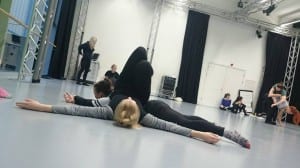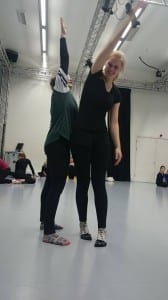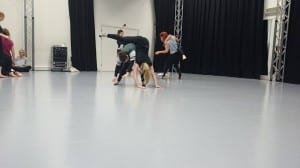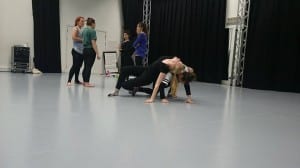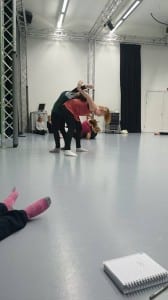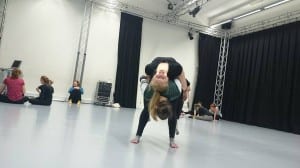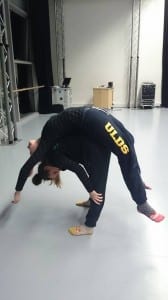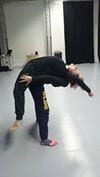This week was our final week of Contact Improvisation and consisted of our usual class followed by a performance of our created score on the Thursday evening. In our Monday class, we used the time to perform our score to each other in order to gain feedback which we could use to develop it, making it a more successful score. Something which we originally struggled to create was an ending to our score however, we used this class as an opportunity to explore different endings I order to discover which one worked the best. I enjoyed creating our score and it was interesting to have some elements being constricted within Contact Improvisation but some left open.
My favourite part to the score was the use of chance. Individually, at the beginning of our score we asked a member of the audience for a number either between 1-5 or 1-10. These numbers determined whether we began dancing on a lower or high level, depending if the number was odd or even, but they also determined how many encounters we had to have with another person before we could leave a space. This made our score very interesting as each individual had their own goal, meaning some people may be wanting to sustain a duet if they only had a small number whereas, people with a larger number may be looking to move through partners at a faster pace. For the performance I was the number eight, this meant that despite my efforts to travel between duets quicker, I still found myself constantly in the space and I was unable to step out to observe. In the rehearsals of our score I was given a lower number which changed the score entirely for me as I enjoyed stepping out and observing however, when I was constantly in the mix of improvisation I enjoyed the score also for the fact that I was always moving. I did find having a higher number more difficult but it also made the experience more exciting.
Moreover, our score looked at controlling space at certain points within the score. The rule was that if a duet was left in the space, the observing dancers would create a corridor for the duet to dance in, restricting the space in which the duet could move within. In the performance this rule occurred twice as myself and the partner I was with were left in the space. In my first duet the space didn’t feel as restricted as it did with the second duet, I think this was due to the second duet travelling further through the space.
Overall, I think that I found it more difficult to perform our score to an audience rather than just undertaking the score in class, I think this is due to Contact Improvisation being such an internal movement, meaning that you are only really thinking of yourself in relation to your partner and other dancers. Having an audience watching you as you do this feels much less natural and traditionally when movement is being performed to an audience you are meant to project your focus out to them, which is very different to Contact Improvisation. Personally I do not think that in terms of Contact Improvisation, I performed my best and I think that many of the duets which I undertook did not feel as relaxed and fluid as they usually do. This is possibly to down my group as a whole and the fact that everyone may have been slightly nervous so wasn’t moving as well as they have done before in class. However, I think performing our score was an important experience as it pushed us out of our normal comfort levels whilst doing Contact Improvisation, making it a good way to end our module.
